
![]()
Выполнить задания, выдел-е красным…
Present Simple
We use the present simple:
a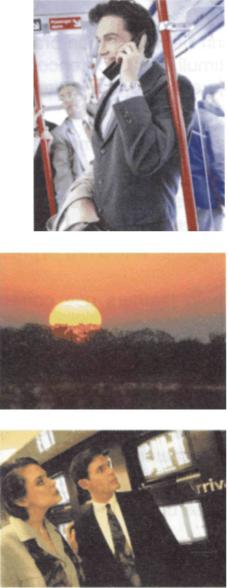 )
for permanent states, repeated actions and daily routines.
)
for permanent states, repeated actions and daily routines.
He works in a bank.
(permanent state)
He takes the train to work every
morning.
(daily routine/repeated actions)
b) for general truths and laws of nature.
The sun sets in the west.
c) for timetables (planes, trains, etc.) and programmes.
The plane from Brussels arrives at 8:30.
d) for sports commentaries, reviews and narration.

Peterson overtakes Williams and wins the race, (sports commentary)
Mike Dalton plays the part of Macbeth, (review)
Then the prince gets on his horse and quickly rides away. (narration)
e) to give instructions or directions (instead of the imperative).
You sprinkle some cheese on the pizza and then you bake it. (Instead of: Sprinkle some cheese on the pizza ...)
The present simple is used with the following time expressions: usually, often, always, etc., every day! week/monthlyear, in the morning I afternoon I evening, at night, at the weekend, on Mondays, etc.
We use the present continuous:
a)

for actions taking place now, at the moment of speaking.
He is giving the baby a bath at the moment.
b)
f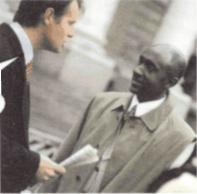 or
temporary actions; that is actions that are going on
around now, but not at the actual moment of speaking.
or
temporary actions; that is actions that are going on
around now, but not at the actual moment of speaking.
^1 m looking for N
a new job these days.
(He is not looking for a job at the moment of speaking.)
c) with adverbs such as: always, constantly, continually, etc. for actions which happen very often, usually to express annoyance, irritation or anger.

I'm always meeting Sara when I go shopping. (action which happens very often)
You're constantly interrupting me when I'm talking, (expressing annoyance/irritation)
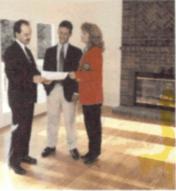
d) for actions that we have already arranged to do in the near future, especially when the time and place have been decided.
They're moving into their new house next week. (The time has been decided.)
e) for changing or developing situations.
More and more species are becoming extinct.
The present continuous is used with the following time expressions: now, at the moment, at present, these days, still, nowadays, today, tonight, etc.
6
UNIT1 Arises
We use the present perfect:
We use the present perfect continuous:
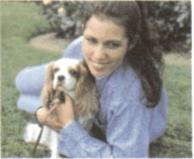
b)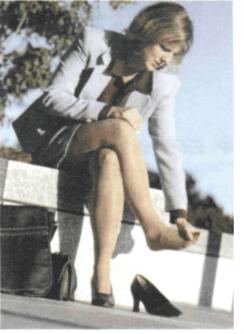
Rachel has had the dog for
three years. (She got the dog three years ago and she still has it.)
b)
I
for an action which has recently finished and whose result is visible in the present.
She has just washed her hair. (She has now wrapped her hair in a towel, so the action has finished.)
c)
f or
an action which happened at an unstated time in the past. The exact
time is not mentioned because it is either unknown or unimportant.
The emphasis is placed on the action.
or
an action which happened at an unstated time in the past. The exact
time is not mentioned because it is either unknown or unimportant.
The emphasis is placed on the action.
The Taylors have bought a
sailing boat. (The exact time is unknown or unimportant. What is important is the fact that they now own a sailing boat.)
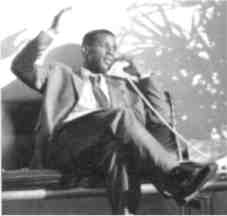
to put emphasis on the duration of an action which started in the past and continues up to the present, especially with time expressions such as for, since, all morning I day I year, etc.
Sam has been talking on
the phone for half an hour. (He began talking on the phone half an hour ago and he is still talking.)
for an action which started in the past and lasted for some time. The action may have finished or may still be going on. The result of the action is visible in the present.
Her feet hurt. She has been walking all morning. (The result of the action is visible in the present - her feet hurt.)


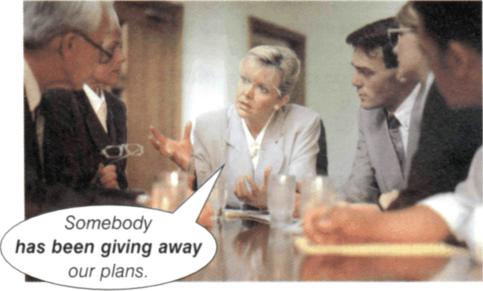
C) to express anger, irritation or annoyance.
d)
for an action which has happened within a specific time period which
is not over at the moment of speaking. We often use words and
expressions such as today,
this morning/evening/week/month, etc.
She has taken fifteen pictures today. (The time period - today -is not over yet. She may take more pictures.)
BUT: She took twenty pictures yesterday. (The time period - yesterday - is over.)
Note: We use the present perfect to announce a piece of news and the past simple or past continuous to give more details about it.
The police have finally arrested Peter Duncan. He was trying to leave the country when they caught him.
The present perfect is used with the following time expressions: for, since, already, yet, always, just, ever, never, so far, today, this week/month, etc., how long, lately, recently, still (in negations), etc.
(The speaker is irritated.)
Note: With the verbs live, work, teach and feel (= have a particular emotion) we can use the present perfect or present perfect continuous with no difference in meaning.
We have lived/have been living here for twenty years.
The present perfect continuous is used with the following time expressions: for, since, how long, lately, recently.
1
Note: We use the present perfect to put emphasis on number and the present perfect continuous to put emphasis on duration.
Compare the examples:
e.g. I've typed four reports so far.
I've been typing reports all morning.
The teacher has been correcting I has corrected essays for three hours.
Michael's car broke down last week, so he useslis using his father's for the time being.
10 It rarely gets/is getting very hot in Britain.
Choose the correct answer.
♦ Adverbs of frequency (always, usually, often, sometimes, seldom/rarely, never, etc.) come before the main verb (read, work, etc.) but after the verb to be, auxiliary verbs (do, have, etc.) or modal verbs (can, should, etc.). Adverbs of frequency go before the auxiliary verbs in short answers.
e.g. Susan often goes skiing at the weekend. Kim is sometimes rude to other people. You can always call me if you need help. Do you help your mother with the housework?' Yes, I usually do.'
♦ Expressions such as every day, once/twice a week/month, etc., most mornings/evenings, etc. go at the beginning or the end of a sentence. Usually, often, sometimes, normally and occasionally can go at the beginning or the end of a sentence for more emphasis.
e.g. We go on holiday twice a year. Usually, I finish work at five. I feel bored sometimes.
♦ The adverbs never, seldom and rarely have a negative meaning and are never used with the word not
e.g.
I rarely go
to bed late. (NOT: /
rarely
don't go ...)
Underline the correct tense.
The plane leaves/has left at four o'clock. We must be at the airport by two o'clock.
It gets/is getting colder and colder every day.
Have you seen Linda? I have been looking/am looking for her for almost an hour.
Sam is a very interesting person. He knows/has known all kinds of unusual facts.
First, you are heating/heat the oven to a temperature of 180°C.
Have you heard the news? They have just elected! have been electing a new club chairman!
Martha is finding/has found a new job. She is starting next week.
1 I met our new boss this morning." 'I ...C... him, too. He's very nice.'
A am meeting B have been meeting C have met
2 ' in a hotel?'
'No, but my parents did last summer in Rome.' A Have you ever stayed B Did you ever stay
C Are you ever staying
3 Who is in that new film?'
'Well, a young actress the leading role.'
A has been playing B plays C has played
4 Is David at home?'
Yes, but he a shower at the moment.'
A is having B has been having C has
5 Why are you so upset?'
I my favourite ring.'
A lose B have been losing C have lost
6 'Have you found a house yet?'
'No. I with my aunt at the moment.'
A stay B am staying C have stayed
![]()
